This year’s Best Human Rights Books of the Year list has been limited to ten books. It is also the first year Best Human Rights Books lists have appeared in quarterly instalments. Out of the dozens of books that appeared on those four lists (see links above), the following ten were selected.
Previous Best Human Rights Books lists: October-December, July-September, April-June, January-March, 2017, 2016, 2015

Overall, in 2018, a total of 134 books were considered. That number is substantially more than in past years: 107 in 2017, 101 in 2016, and 84 in 2015.
Far more non-fiction than fiction made the quarterly lists, but here the genres are close to equally divided, with six books of non-fiction and four of fiction. Of the non-fiction books, one is a memoir and three others have a strong narrative drive. In that sense, the bias of the list leans toward stories.
All ten books would qualify as a “good read”, though not necessarily as an “easy read”. Some may so effectively depict the pain and suffering resulting from human rights abuses that something within the reader wishes to turn away. Some may challenge the reader’s understanding of a particular issue or event. And some are linguistically and stylistically rich and complex.
Another bias is that all of the books except two deal with contemporary or recent subject matter. The exceptions are Milkman, which goes back to 70s Belfast for inspiration, and Kolyma Stories, a monumental accomplishment of translation and publication, being the first full collection in English of Shalamov’s Gulag stories. The latter is also the only book on the list originally written in a language other than English.
The books are about, or set in, or have to do with China, Egypt and the wider Arab Spring, Israel-Palestine, Northern Ireland, Russia, Rwanda, Syria, and the United States.
All book titles below are linked to the Book Depository’s website. Buy a book through a link and five per cent of the order will go to the non-profit Hong Kong Free Press which publishes high-quality, fully independent journalism on Hong Kong and China, a very worthy cause.
The best of 2018:
No Turning Back: Life, Loss, and Hope in Wartime Syria, Rania Abouzeid (W.W. Norton)

“Revolution is an intimate, multipart act. First, you silence the policeman in your head, then you face the policemen in the streets.” The thing is, when you revolt in a place as repressive as Syria, there’s “no turning back”.
The product of over six years of reporting in Syria, Turkey, Jordan, Lebanon, the US and Europe, this book has a large cast of characters but focuses on four: Suleiman, a young man from a rich family in a pro-Assad town who decides to rebel; Mohammad, a young Islamist released from prison during the uprising who ends up with Al-Qaeda before fleeing the struggle and landing in Europe; Abu Azzam, a slightly older Islamist who ends up a commander in the Free Syrian Army; and nine-year-old Ruha, who worries constantly about her relatively prosperous father turned revolutionary who leaves the family to go into hiding.
The book gives the Syrian tragedy the most human of faces, including groups accused of human rights abuses and routinely demonized in the West, such as the Islamists, showing that their role in the conflict is rooted in decades of repression.
In recent years, there have been numerous books about Syria, many of which I have read. If you want the current civil war situated in historical context, Burning Country is the place to go. If you want an oral history, We Crossed a Bridge and It Trembled. For an analysis by a widely esteemed Syrian intellectual whose own wife was disappeared, The Impossible Revolution.
But in terms of presenting through the eyes of participants and ordinary Syrians how the uprising unfolded and eventually turned into an armed revolt and then a complex, multi-sided conflict, one can hardly do better than No Turning Back.
The Wall and the Gate: Israel, Palestine, and the Legal Battle for Human Rights, Michael Sfard (Metropolitan)
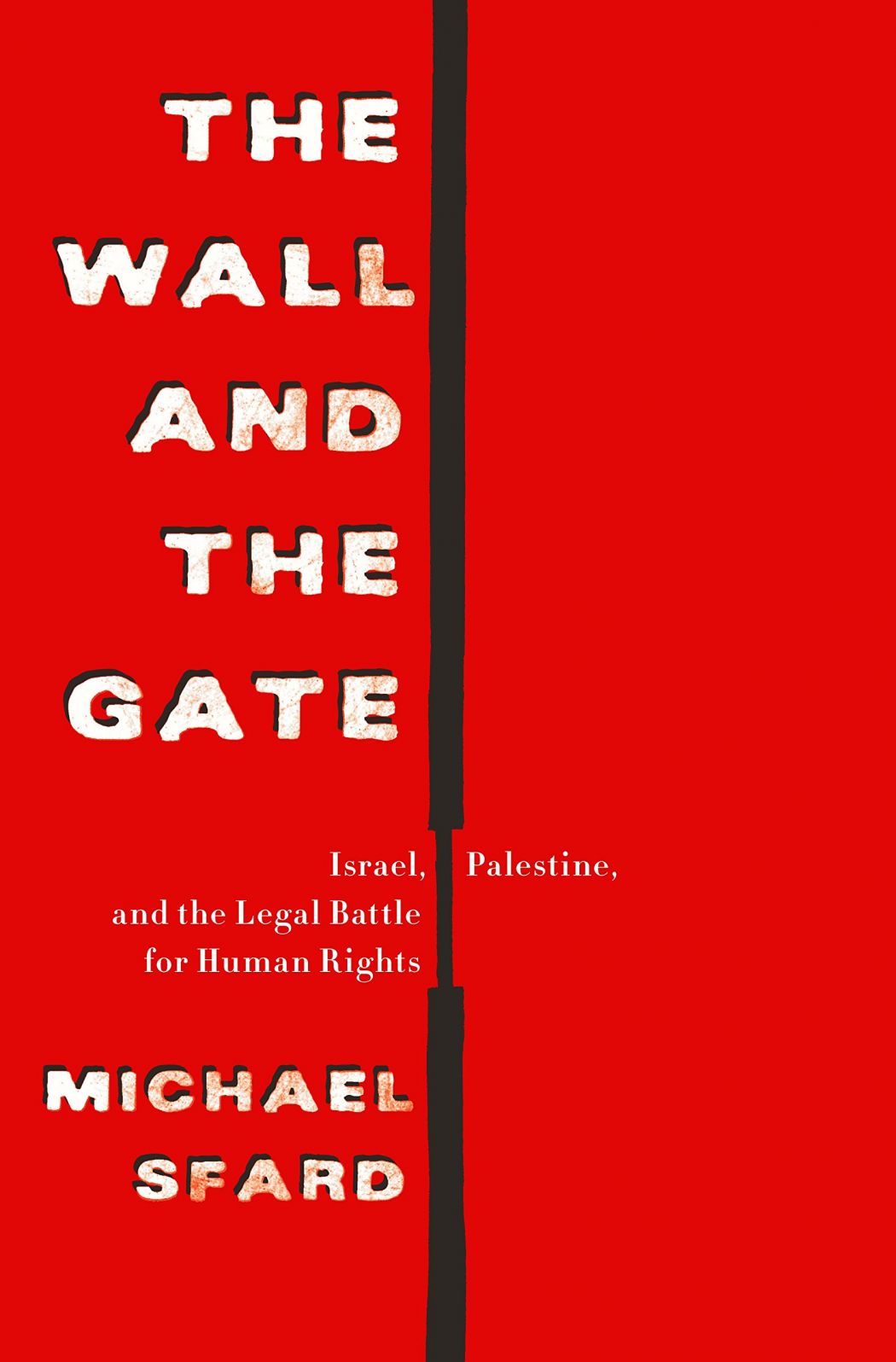
Michael Sfard is an Israeli human rights lawyer who has represented Palestinians in Israeli courts for decades. He belongs to a group of such lawyers, and this book his history of their work.
The title comes from an anecdote: Sfard is discussing how to deal with Israel’s at-the-time new separation wall in the West Bank with Palestinian farmers whom the wall cuts off from their land.
Sfard, his colleagues and Israeli human rights NGOs take the position that the wall itself is illegal and must be challenged on that fundamental basis.
How long, the farmers ask, will it take to challenge the wall in court? Maybe two or three years, Sfard replies. Then could you ask the IDF if, in the meantime, they could make a new gate in the wall so we can reach our fields? the farmers ask.
A new gate would help the farmers regain access to their livelihood but also risks legitimising the wall and being used to portray Israel as considering Palestinian needs.
That, Sfard says, is the crux of the self-contradictory nature of his legal work to defend the rights of Palestinians in the occupied West Bank: the whole occupation and the ways it is carried out are illegal yet the Israeli High Court has time and again upheld such policies. To engage with such a system is to legitimise it.
But at the same time, Sfard and his colleagues, while not having successfully challenged the illegal underpinnings of the occupation, have frequently succeeded in defending their individual clients’ rights.
Coming from the context of another system in Hong Kong which is like Israel’s in that it on the one hand has a solid tradition of rule of law while on the other consists of systematic deprivation of fundamental rights by those in power, I approach this issue with perhaps less philosophical and professional anguish than Sfard.
Of course, fighting the occupation in courts of law is of itself insufficient, but as one among many strategies, it can be at times effective, even while it may often feel that one is continual losing the big struggle while occasionally gaining a small victory.
This is a brilliant study by a “human rights insider” of the ambiguities, debates, strategies and actions of his and other human rights lawyers’ work.
Just to take one example, for years they fought deportations from the Occupied Territories as being against both international and Israeli law. They continually lost, but in losing, arguably, they ultimately won: the last deportation was also the biggest, of over 400 members of Hamas back in the 1980s, but the lawyers and their allies had by that point ensured that the numerous and varied costs the Israeli government paid to deport were so high that it ceased the practice.
A victory? Certainly of sorts, but then again, it appears small against the backdrop of the on-going injustice of occupation.
There are separate chapters on some of the key policies the human rights lawyers have fought in the courts, forced deportations, settlements, torture, the separation barrier and unauthorized outposts. And by the way, Sfard ends up acceding to his clients’ desire and requesting the Israeli government to install a new gate in the separation wall.
This leads to results he could not have foreseen…. The Wall and the Gateis worth reading together with fellow human rights lawyer, Raja Shehadeh’s Where the Line is Drawn (on the 2017 Best Human Rights Books list). Daniel Shulman’s review of this book and Rooted Cosmopolitans is excellent.
Milkman, Anna Burns (Faber & Faber)
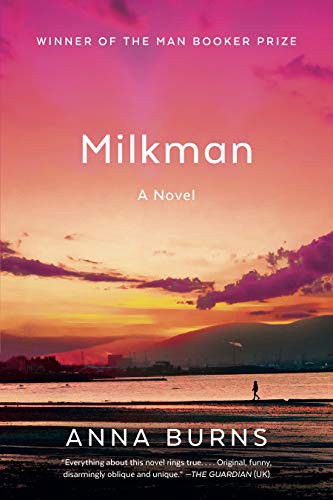
The idiosyncratic language of this book insinuated itself into me. It is not an easy, or “entertaining” or page-turning read, but rewards patience as a penetratingly insightful examination of the various ways violence — visible and invisible, physical and psychological, obvious and subtle — is visited upon people.
It’s about a dysfunctional, violent community as told from the perspective of one of its most powerless, vulnerable members, an 18-year-old woman who is being stalked by a paramilitary leader regarded by many in the community as a hero.
This “Milkman” is not a milkman. The community gossips, completely falsely, about the narrator as having taken up with the Milkman as his mistress.
The narrator knows she’s lowest on the totem pole and acts accordingly, in preventive self-defense, by trying to make herself as invisible as possible and steer clear of trouble, but even small things, like the fact that she reads while walking, make others suspicious of her, and she is at risk of becoming one of the “beyond-the-pales”, the outcasts.
The narrator describes the community as “our intricately coiled, overly secretive, hyper-gossipy, puritanical yet indecent, totalitarian district”.
The community is not named, nor is the city it is in, nor the “state-renouncing paramilitary”, nor the “state-supporting paramilitary”, nor the state, nor, for that matter, any of the characters, but it’s clear that in broad outline, it is based on the Catholic community of Belfast during the Troubles in the 70s.
The author says, “Although it is recognisable as this skewed form of Belfast, it’s not really Belfast in the 70s. I would like to think it could be seen as any sort of totalitarian, closed society existing in similarly oppressive conditions… I see it as a fiction about an entire society living under extreme pressure, with longterm violence seen as the norm… about how power is used, both in a personal and in a societal sense.”
Incidents of violence are scattered like debris through the story: the head of Somebody McSomebody’s brother is blown off in the middle of his street and never found in spite of an extensive search; the state soldiers massacre all of the dogs in the district one night so as to prevent them from warning people there of the soldiers’ approach; a cat’s head is discovered, having been blown off by unexploded ordinance dropped by the Germans in World War II; and women are always the ones who are at the bottom of the heap, as well as the ones often responsible for enforcing the unjust prevailing order.
“The truth was dawning on me of how terrifying it was not to be numb, but to be aware, to have facts, retain facts, be present, be adult.”
China Dream, Ma Jian (Chatto & Windus)

Times like these need truth-tellers like Ma Jian: “The China Dream is another beautiful lie concocted by the state to remove dark memories from Chinese brains and replace them with happy thoughts. Decades of indoctrination, propaganda, violence and untruths have left the Chinese people so numb and confused, they have lost the ability to tell fact from fiction.”
These words are in the prologue. What follows is a story that speaks just as clearly: a corrupt official is in charge of the China Dream Bureau. He is a fervent believer in Xi Jinping’s China Dream and hopes to develop a way of instilling it directly into people’s brains.
But he is increasingly plagued with memories and nightmares from the Cultural Revolution, when he was a Red Guard who was partly responsible for his own parents’ deaths.
Inspired by Orwell’s 1984, China Dream is about the relationship between historical past and present: Can the Communist Party really “cancel” its gruesome past, forcing the Chinese people to forget it through propaganda and censorship?
Unsurprisingly, the novel suggests that while on the surface the Party may appear to be strikingly successful, it’s really not that easy.
The past is present in the present, in the form of nightmares, and impressed deep within people’s being, whether consciously or unconsciously, in the form of deep-set patterns of deceit, including self-deceit, of violence, and of corruption. The violence of today blossoms out of the unresolved violence of yesterday.
Xi Jinping’s China Dream, from this perspective, is quite similar to the Cultural Revolution. It isn’t as spontaneously violent or chaotic, but it reproduces features such as forcing people to choose sides, hounding those who don’t or who choose the wrong side, and giving cover to the oppression of the powerless by the powerful.
It imposes a forced and artificial national “Chinese” identity, obscuring the many differences and conflicts within Chinese society. China Dream suggests that, ultimately, Xi’s Dream is just the latest symptom of a deep mental illness that has been plaguing the Chinese people for decades.
Ma Jian could find no publisher in Hong Kong for the Chinese original. When he came to the Hong Kong International Literary Festival, two venues successively prevented him from speaking, in spite of prior agreement with the festival; ultimately, under public pressure, the first relented. Who knew literature could be so dangerous?
Kolyma Stories, Varlam Shalamov, translated by Donald Rayfield (New York Review of Books)

Shalamov somehow managed to survive fourteen years in the Soviet gulag, from 1937 to 1951. After his release, he began to write these stories and continued for the next quarter century.
The stories could not be published in the Soviet Union. They were disseminated as samizdat and began to be published in Russian in the West in the mid-60s. The first faithful translation of a selection of the stories appeared in English in 1980.
Now, for the first time, all six books of stories appear in two volumes in English: this the first, the second to be published next year.
The semi-autobiographical stories are unadorned Chekhovian vignettes from hell, about what happens when human beings are stripped of even the most basic dignity and rights. They are about hunger, death, oppression, humiliation, degradation, cruelty.
They are, of course, about a very particular place, the Soviet gulag, but like all great literature they have a universal quality. They are about what human beings are capable of doing to other human beings under certain conditions, and in this sense, they serve as an eternal warning.
I was stunned by their penetrating simplicity and immersed in a world so different and distant from my own. As extreme as the situation of Soviet political prisoners in labour camps was, it feels quite familiar as one still doesn’t have to look far to see human beings being brazenly and brutally exploited and humiliated.
The Paris Review blog published a fragment from Shalamov’s notebooks titled, in the original, “What I learned from the camps” in 45 points. It appears in the introduction by Donald Rayfield. He is the stories’ translator and, with his deep knowledge of Russian literature (his biography of Chekhov is a classic), Kolyma Stories could not have hoped for a better one. Here are two stories from the collection.
Brothers of the Gun: A Memoir of the Syrian War, Marwan Hisham and Molly Crabapple (One World)

In the past five years, I’ve read half a dozen books on Syria, all very good in their own right, but this is the first by a young Syrian describing his experience of uprising and war. It’s also the first about living under Islamic State rule in Raqqa, Marwan Hisham’s hometown.
His story is immediate, passionate and forthright. Like many other Syrians, Hisham was a great believer in the initial nonviolent uprising against the Assad dictatorship and deplores what has become of his country since.
His story gives a sense of how it spiralled into multi-front war, showing the ever-increasing influence of armed Islamist groups and their inclination to fight each other as much as if not more than Assad.
The fates of two of his close friends illustrate just what that history has meant in terms of human consequences. He also goes back in time to his five years of religious education while growing up as well as his studies of English at university in Aleppo.
When the IS takes over Raqqa, Hisham decides to stay, eventually opening an internet cafe where most of the patrons are IS Brothers. His profiles of them are the most darkly comic episodes in the book.
Hisham met Molly Crabapple on Twitter. They forged an unlikely and fruitful collaboration. Crabapple’s drawings greatly enhance the book.
Other books may provide better history and context on Syria, and Rania Abouzeid’s excellent No Turning Back from earlier this year gives a panoramic overview of the conflict by following the course of the lives of several people from different backgrounds, but Hisham’s story gives as vivid a sense as any of what it has been like to live through it.
Into the Hands of Soldiers: Freedom and Chaos in Egypt and the Middle East, David D. Kirkpatrick (Viking)
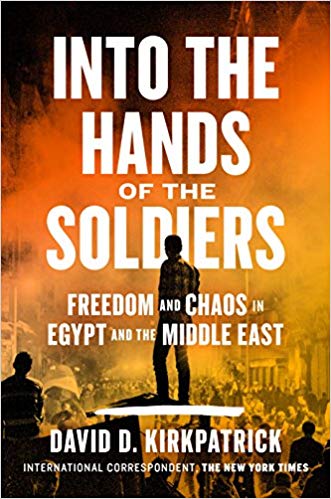
Kirkpatrick was the New York Times correspondent in Cairo at the time of the Arab Spring. His telling of the uprising, the election of the Muslim Brotherhood and their overthrow by the army is sharp, evocative, pacy, vivid and expansive.
There are chapters on Libya and Tunisia as well, but Egypt is definitely front and center. Being a NYT reporter gives Kirkpatrick some access to the elites; he tells their stories but clearly takes the side of the masses.
Most of the books on the Egyptian uprising I’ve read up to now have focused on the activists, both the liberal secularists and the Islamists. This gives attention to them as well, but is perhaps most valuable for its focus on higher level politics, especially inside the Muslim Brotherhood, Mohamed Morsi’s office, the military, the courts and the Obama administration.
The book got some media coverage for what it reveals about the behind-the-scenes thinking in the Obama administration, whose response to the Arab Spring in general and the Egyptian uprising in particular was in my opinion atrociously poor and ineffectual, an opinion only reinforced by this book.
With the Obama administration divided by a conflict between the centrist old-timers who sided with first Mubarak and then the Egyptian military, and the newcomers who argued Obama to stand strong with the uprising, the Egyptian military knew it could play Obama, and did.
Woefully, Obama even refrained from calling the military’s overthrow of Morsi a coup.
The book is compelling throughout but really excels in its depiction of the period from the coup through the army massacre of 1,000 Muslim Brothers at Rabaa and onward.
Nobody has written better about the tragedy of the coup for Egypt and the Arab world, and I agree with Kirkpatrick that it was madness for the revolutionaries to advocate the overthrow of the elected Morsi government by the military, however ineffectual and authoritarian Morsi became.
The result was a dictatorship far worse than Mubarak’s, with upwards of 30,000 political prisoners — the most in the world — and an Islamist insurgency in the Sinai that has killed thousands of Egyptian security people and provoked secret aerial bombardments from Israel.
Elsewhere this was seen as a signal that the US would not back the Arab Spring, contributing to civil war in Libya; the same in Yemen, and the isolation of the pro-democracy movement in Syria.
On just about every indicator, Sisi has been far worse than the mediocre Morsi, of whom Obama administration officials were so critical, on top of which he’s imposed drastic restrictions on civil and political liberties and increased the economic might of the army, all while continuing to receive $1.3 billion in aid from the US. And we wonder why democracy around the world is in danger.
Patriot Number One: American Dreams in Chinatown, Lauren Hilgers (Crown)
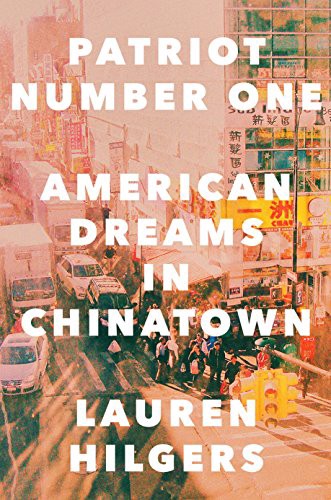
At first, I wasn’t too keen on the title, but when I learned it was the original name of Wukan uprising leader Zhuang Liehong on his seminal social media group, it made perfect sense, encapsulating a paradox at the heart of the story.
On the one hand, Zhuang is a fully committed patriot to his home village of Wukan in Guangdong, China, to the extent that he puts himself at considerable risk in leading a movement against corrupt government officials; on the other, he and his wife, Little Yan, make the heartbreaking decision to flee an impending government crackdown on Wukan and move to the US.
Here they endure the travails of applying for political asylum, being separated from their toddler son whom they had to leave behind with their parents in China, and trying to make lives for themselves in a bewildering new country that isn’t exactly the beacon of freedom on the hill that Zhuang, the idealist of the two, imagined.
Zhuang and Little Yan live life suspended between these two places, the US and China, in the Chinese enclave of Flushing in Queens, New York, and there is no book that gives better insight into that community. Most of the story focuses on what happens to the couple after they get to the US, and in that sense, it is as much about immigration and exile as about dissidence.
Therein also lie its significance and uniqueness: There are not many books about the experience of Chinese dissidents in exile, even though this is a widely shared experience.
By all accounts, it is not an easy life. From Wei Jingsheng to Chen Guangcheng, they face the huge challenge of remaining relevant in China while making new lives for themselves abroad and often seem to succeed at neither.
But the book is also about what happens in Wukan, and while the uprising and its inevitable crushing got much media attention, this the fullest telling of that story to appear so far in English. Wukan is an almost parable-like tale of what happens in China today when the aspirations of the people come up against Communist Party dictatorship.
In Praise of Blood: The Crimes of the Rwandan Patriotic Front, Judi Rever (Random House Canada)
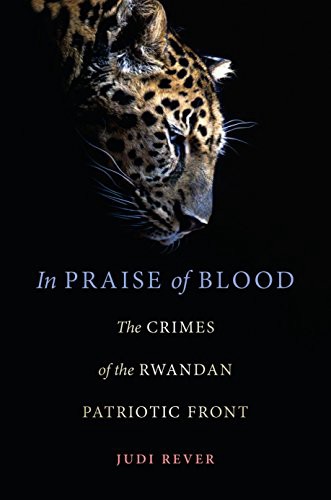
This book tells the story of the numerous crimes against humanity if not outright genocide, perpetrated by Paul Kagame and his Rwandan Patriotic Front.
The Hutu genocide against the Tutsis in 1994 has consistently been the focus of foreign observers of Rwanda, but Kagame has used that genocide and the world’s guilty conscience over doing nothing to stop it to cement his dictatorial grip on power, while allying himself closely with the US, the UK and other Western democracies.
No matter what he does, they refuse to stop funding his regime and in fact have frequently praised him as a model African leader.
And what are those crimes exactly? This book doesn’t focus on the more mundane repression of day-to-day dictatorial rule in Rwanda, the subject of Anjan Sundaram’s excellent Bad News, which appeared on the Best Human Rights Books of 2016 list.
The mission of In Praise of Blood is to provide evidence of the more outrageous and massive attacks on civilians from 1990 to 1992 resulting in tens of thousands of deaths; mass genocidal killings of Hutus during the invasion of Rwanda in 1994 (while the other side was perpetrating its genocide); more mass genocidal killings under the guise of counterinsurgency committed mostly from 1994 to 1997, the years after the RPF came to power; the 1996 invasion of Congo and mass killings of Hutu refugees and looting of natural resources there; and the targeted assassinations of opponents abroad.
If that appears a torrent, it is, and one effect this book may have on the reader is that, at moments, it becomes hard to breathe. If it doesn’t provoke indignation at Western support for such a despicable, criminal regime, nothing will.
Indeed, apart from the outstanding documentation the book provides, its other great value is to provide insight into the process of researching it. Rever writes about the regime’s threats against her and the toll her investigations over many years took on her family and personal life.
Reading it, I was reminded of the stories of human rights defenders in China: in many parts of the world, rights defence and truth-telling come with risks to physical and mental health.
Helen Epstein, who wrote a book on Kagame’s fellow dictator next door, Yoweri Museveni of Uganda, another Western ally, has written an excellent two–part review of In Praise of Blood.
Lastly, it must be said, the book is definitely in the running for bad cover of the year: not only does the cover have nothing to do with its subject, it is part of that old tradition of equating Africa with big wild animals. Luckily, what’s inside is much better.
There There, Tommy Orange (Knopf)

The title comes from a famous statement by the writer, Gertrude Stein about her hometown of Oakland, California: “There is no there there.”
While the quotation is often used to disparage the city, what she really meant was that it was impossible to return to any essence in her upbringing there.
Orange’s story is set in Oakland, but as much as anything else the title refers to the characters’ search for their “Indian-ness”: what is it that makes them Native in this urban setting, given their people’s history of oppression and genocide in the US? Is there any “there there”?
In one way or another, nearly every character in this wide cast faces that question. The structure of the story reminds of Marlon James’ A Brief History of Seven Killings in that it is told by and about multiple characters, many of whom are unacquainted, and it revolves around an incident of violence to which they are all related in one way or another.
In the case of James’ story, this is the attempted murder of Bob Marley; in Orange’s, the Oakland powwow, to which all of the main characters are headed.
One further similarity is that these structures are ambitiously employed to portray a people, Jamaicans in one case, Native Americans in the other. The picture that emerges in There There is recognisable to anyone with even minimal acquaintance with the lives of Natives in the US: poverty, violence, broken families, substance abuse, and all-around destructive behaviour towards self and others.
Amidst that rubble, what does it mean to be Native and how can the identity be recovered with pride? One answer, of course, is through novels like this, and this novel’s power comes from these many voices and stories that emerge around that issue.
The novel arguably also frays and stutters as the author tries to hold that massive structure together, but to some extent perhaps that is also the point: a people’s identity exists in cacophony, diversity and contradiction, not in some reducible, illusory unity.
Overall, this is a portrait of a people trying to contend with damage caused by historically traumatic assault on it by other groups of people; as such, it’s an interesting study and point of comparison for all historically traumatized peoples, from African-Americans to Chinese, Tibetans, Rwandans, Russians and many others.
